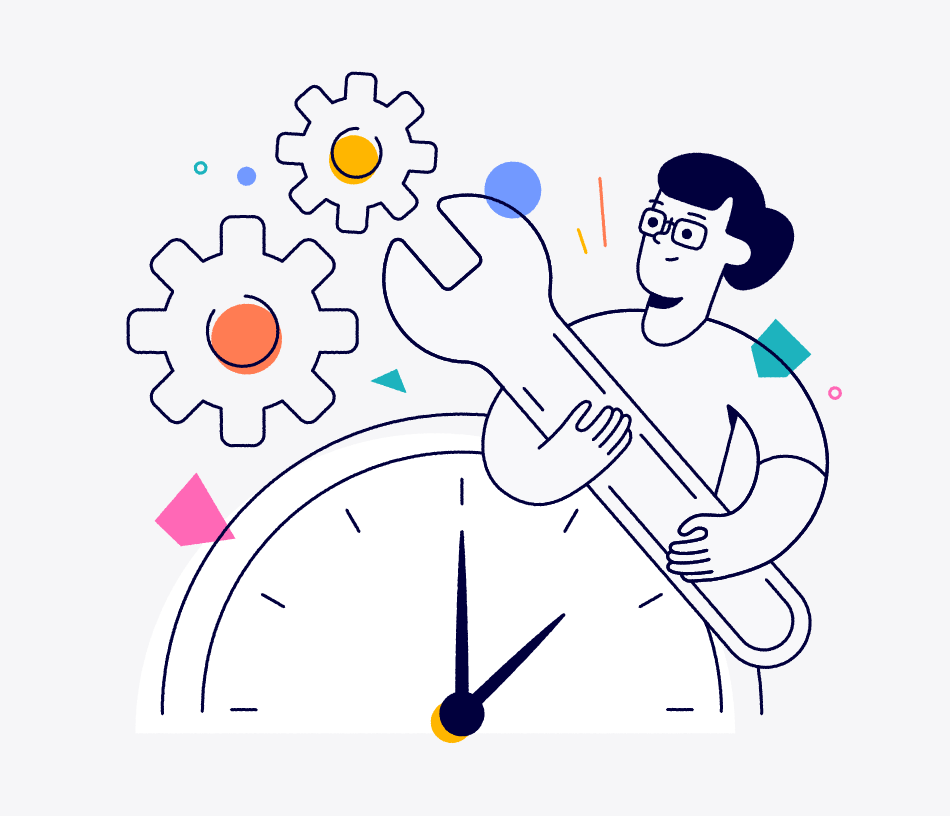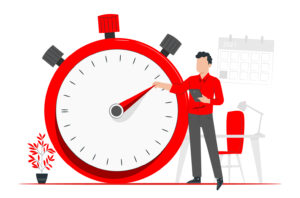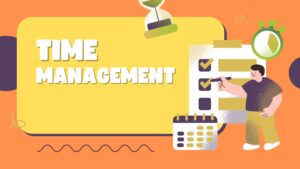Maintaining a successful career today is possible by also making time for personal life. The secret to increasing productivity lies in using time efficiently. Time management techniques help you reach your goals more easily by reducing stress in a busy work environment. Prioritize tasks with popular methods such as the Pomodoro Technique and the Eisenhower Matrix, and preserve your energy with short breaks.
Additionally, to achieve a work-life balance, don’t neglect to spend time on hobbies and with loved ones outside of work. Plan your day to make it more productive, ensuring balance in both your professional and personal life.
The Fundamental Building Blocks of Efficient Time Management
Using time efficiently is the key to achieving success and balance in both professional and personal life. Effective time management reduces stress, boosts productivity, and enhances overall quality of life. Here are the fundamental building blocks of efficient time management:
Setting Goals and Priorities
Setting Goals and Priorities
The first step to using time effectively is to set clear goals and prioritize tasks to achieve them. Classifying tasks by urgency and importance helps you direct your energy effectively. Tools like the Eisenhower Matrix, for example, allow you to categorize tasks as “urgent-important” and “not urgent-not important,” helping you clarify your priorities.
Planning and Organization
Creating daily, weekly, and monthly plans is an essential element of using time efficiently. Writing down tasks makes tracking easier and boosts motivation. Additionally, grouping similar tasks together and breaking tasks into smaller parts increases productivity.
Identifying and Preventing Time Wasters
Time wasters, such as unnecessary phone calls, social media use, or unplanned meetings, reduce productivity. Identifying and minimizing these distractions enhances focus and helps you use your time more effectively.
Breaks and Rest Periods
Instead of working continuously, taking short breaks at regular intervals allows for mental and physical renewal. For example, working for 25 minutes and then taking a 5-minute break as part of the Pomodoro Technique enhances focus and reduces fatigue.
Flexibility and Adaptation
Plans don’t always go as expected. Therefore, it’s essential to be flexible and adapt to unexpected situations. Regularly reviewing your plans and making necessary adjustments helps you use time more efficiently.
Using time efficiently requires discipline, planning, and determination. By integrating these fundamental building blocks into your life, you can achieve balance and success in both your professional and personal life.
Efficiently Organizing Task Priorities
Efficient task prioritization is essential for enhancing productivity and achieving a balanced work-life dynamic. By effectively organizing tasks, individuals can focus on what truly matters, reduce stress, and accomplish their goals more efficiently.
Understanding Task Prioritization
Task prioritization involves evaluating tasks based on their urgency and importance, allowing for a structured approach to managing responsibilities. This process ensures that critical tasks receive immediate attention, while less pressing ones are scheduled appropriately.
Effective Techniques for Task Prioritization
1-)Eisenhower Matrix: This method categorizes tasks into four quadrants:
- Urgent and Important: Tasks to be done immediately.
- Important but Not Urgent: Tasks to be scheduled for later.
- Urgent but Not Important: Tasks to be delegated.
- Not Urgent and Not Important: Tasks to be eliminated.
By using the Eisenhower Matrix, individuals can make informed decisions about task management, ensuring that important tasks are not overshadowed by less critical ones
2-)ABCDE Method: This technique assigns letters to tasks based on priority:
- A: Must-do tasks with serious consequences if not completed.
- B: Should-do tasks with mild consequences.
- C: Nice-to-do tasks with no consequences.
- D: Tasks to delegate.
- E: Tasks to eliminate.
Implementing the ABCDE method helps in systematically addressing tasks, ensuring that high-priority items are completed first.
3-) MoSCoW Method: This approach divides tasks into four categories:
- Must have: Essential tasks.
- Should have: Important but not critical tasks.
- Could have: Desirable but not necessary tasks.
- Won’t have: Tasks to be excluded.
The MoSCoW method aids in clear prioritization, especially in project management scenarios
Steps to Efficiently Organize Task Priorities
- List All Tasks: Begin by documenting every task, regardless of size or importance.
- Assess Importance and Urgency: Evaluate each task to determine its significance and time sensitivity.
- Categorize Tasks: Utilize one of the prioritization techniques mentioned to classify tasks accordingly.
- Allocate Time and Resources: Assign appropriate time slots and resources to each task based on its priority.
- Review and Adjust: Regularly revisit your task list to accommodate any changes or new tasks.
Benefits of Effective Task Prioritization
- Enhanced Productivity: Focusing on high-priority tasks leads to more significant accomplishments.
- Reduced Stress: A clear plan of action alleviates the anxiety of looming deadlines.
- Improved Time Management: Efficient prioritization ensures optimal use of available time.
- Better Work-Life Balance: By managing tasks effectively, individuals can allocate time for personal activities, leading to a more balanced life.

Prioritization of Important Tasks
High-impact tasks are priority activities that directly influence outcomes and align with strategic goals; therefore, they rank among the most important tasks in your workday.
To identify these tasks, assess which activities add the most long-term value or contribute most closely to your goals. By ranking tasks according to their potential impact and tangible results, you can focus your attention on the tasks that provide the greatest benefits.
Prioritizing high-impact tasks starts with making it a habit to review and update your to-do list daily. This way, you not only boost your daily productivity but also take the essential steps toward achieving your long-term objectives.
Time Management and Effective Planning
The fast-paced business world demands essential skills in effective time management and planning. Mastering these skills enhances productivity, lowers stress, and supports a healthy work-life balance. Here are some effective techniques and strategies to help individuals and teams succeed in managing time well.
Prioritization: Sorting tasks by urgency and impact is key to managing workload efficiently. Tools like the Eisenhower Matrix categorize tasks into four groups based on urgency and importance, helping to determine which tasks should be prioritized.
Time Blocking: Allocating specific time slots for focused work minimizes distractions and boosts productivity. This strategy is particularly useful when dealing with high-impact projects.
Regular Breaks: Research shows that taking short breaks throughout the day refreshes focus and reduces burnout. The Pomodoro Technique, which involves working for 25 minutes followed by a 5-minute break, is an effective method for maintaining sustainable productivity.
Effective time management and planning are crucial for achieving success in any professional setting. By implementing these strategies and utilizing tools like Perwatch, both individuals and organizations can enhance productivity and make more informed decisions. Integrating these practices into your daily routine can boost your efficiency and help you achieve a better work-life balance.
👉 Learn more about how Perwatch can help you achieve your goals



